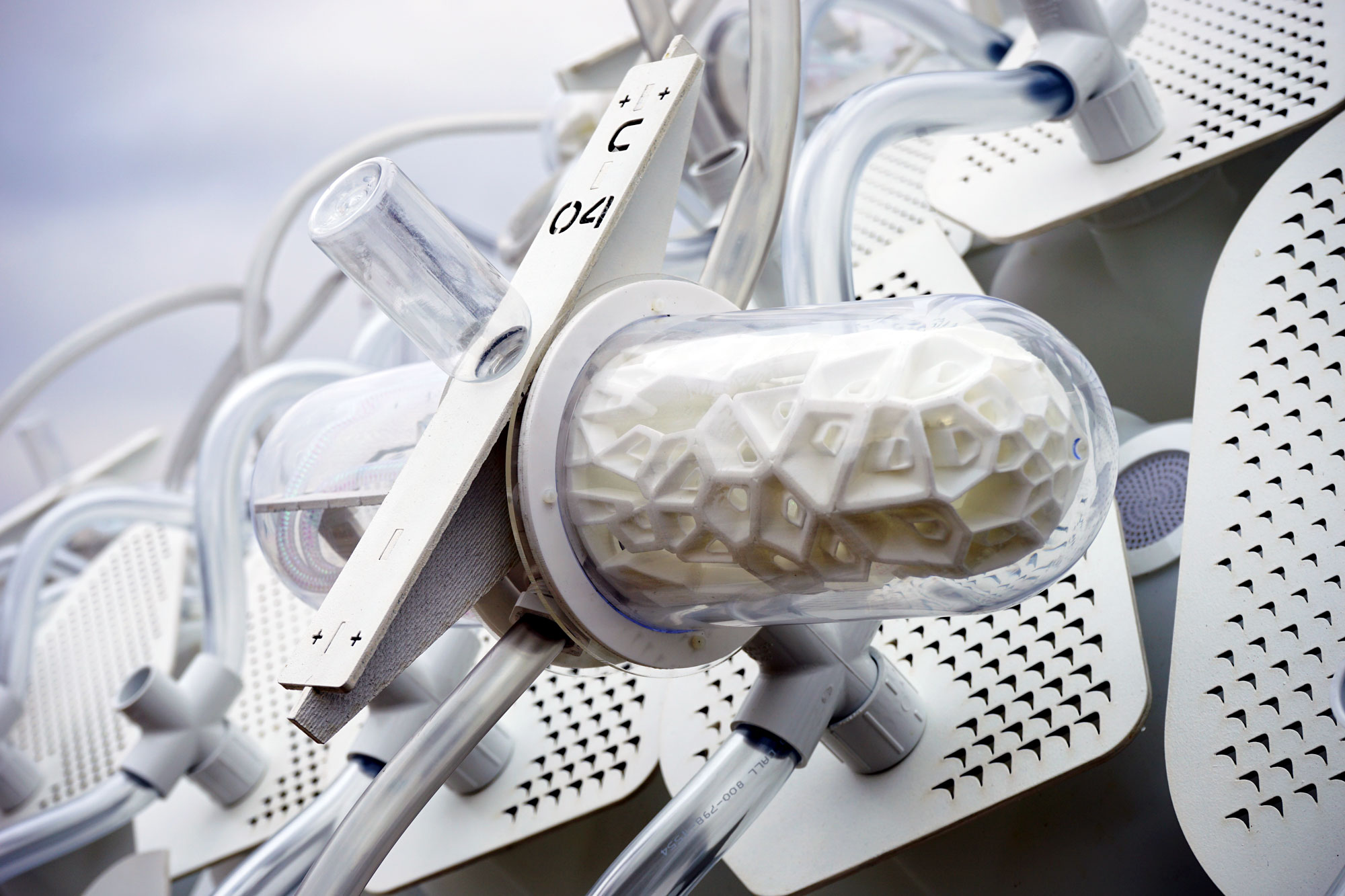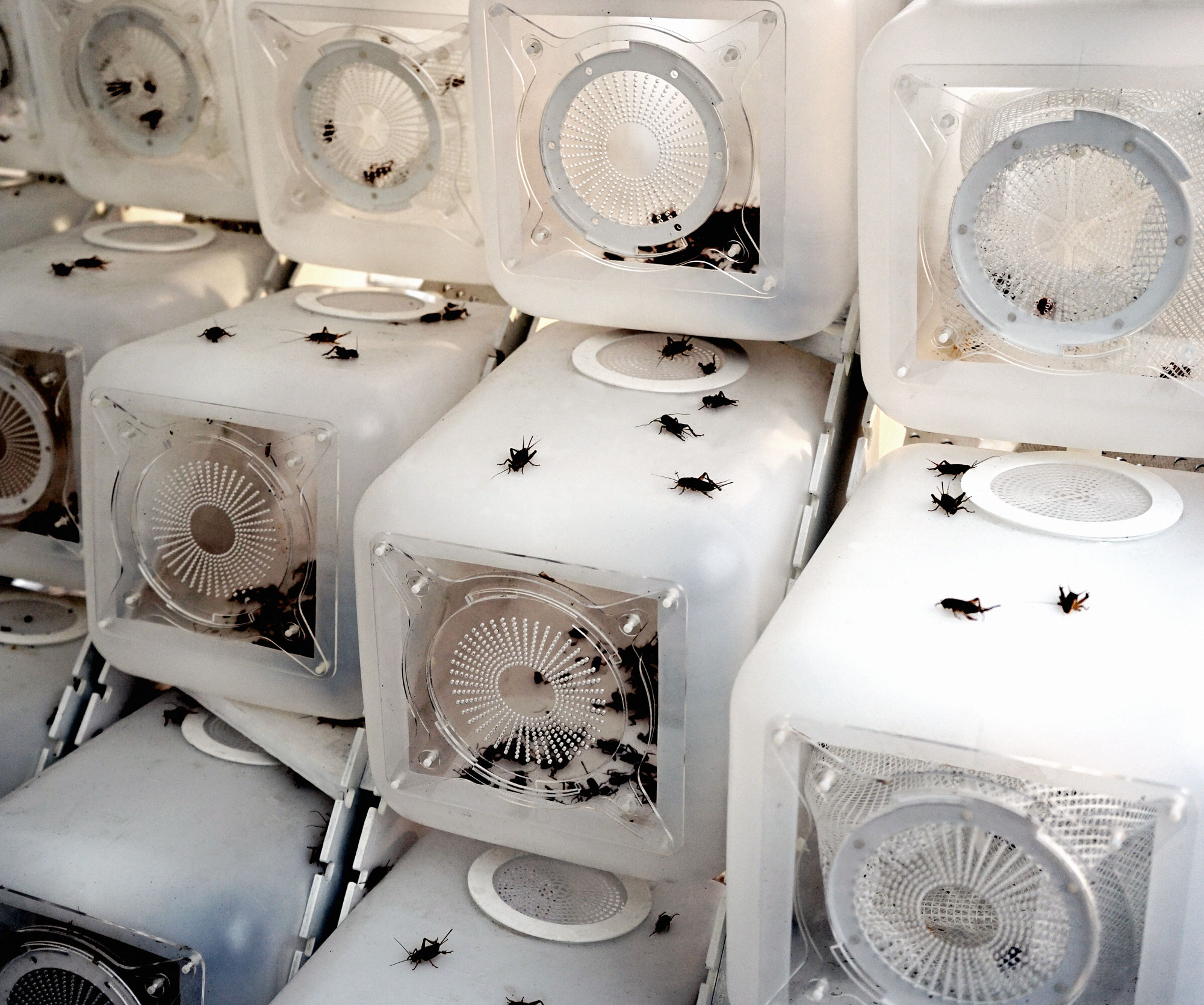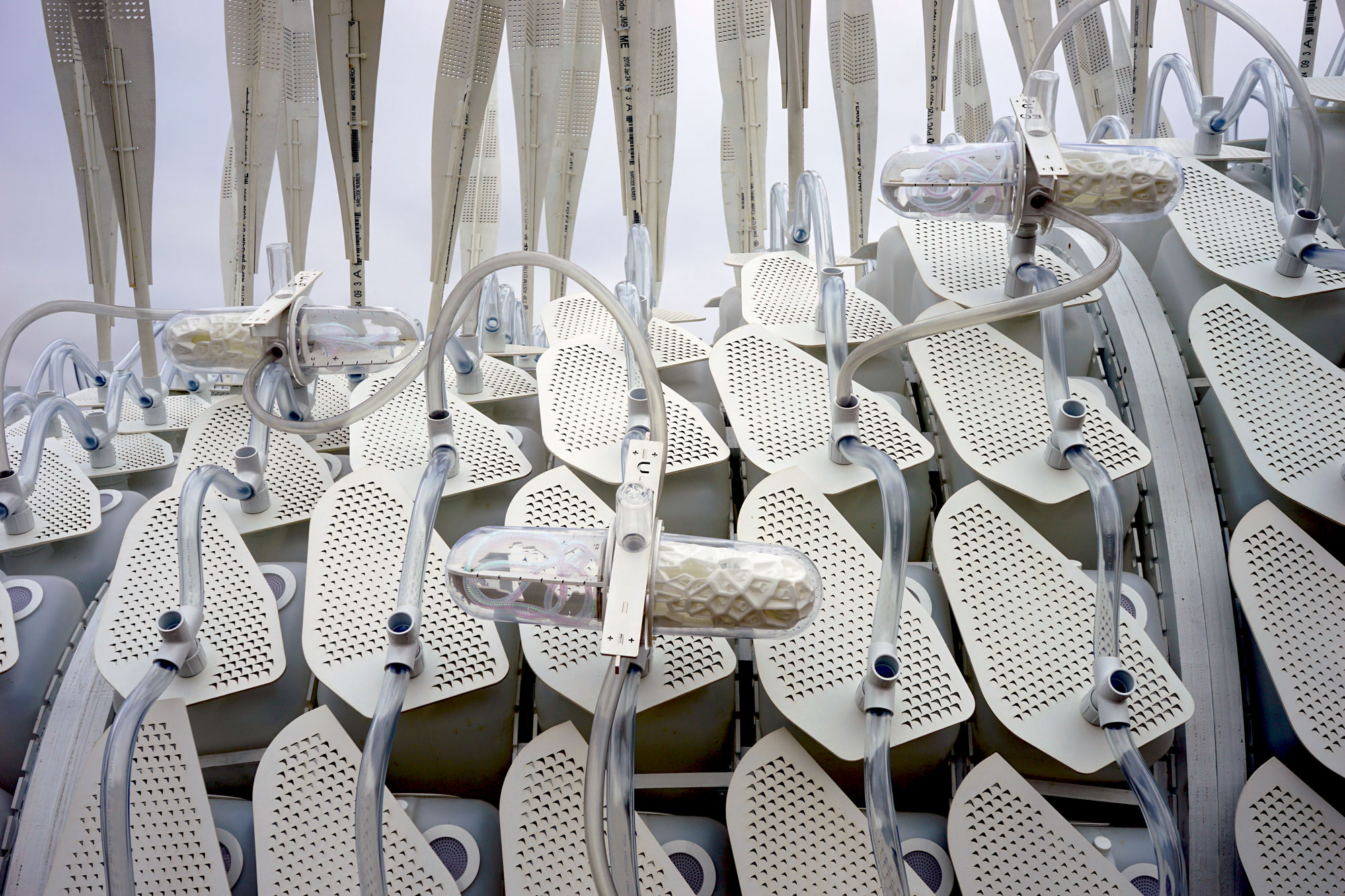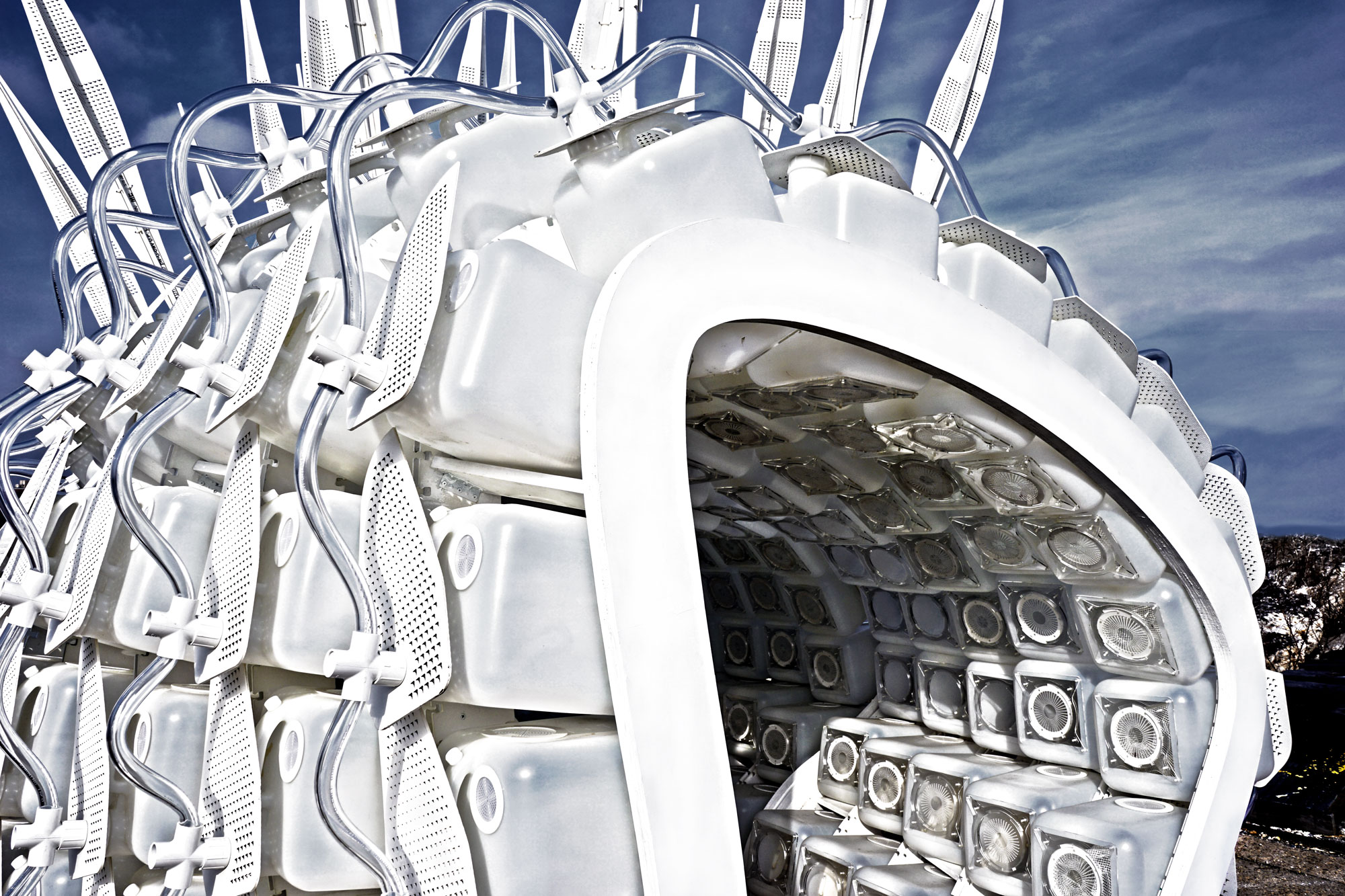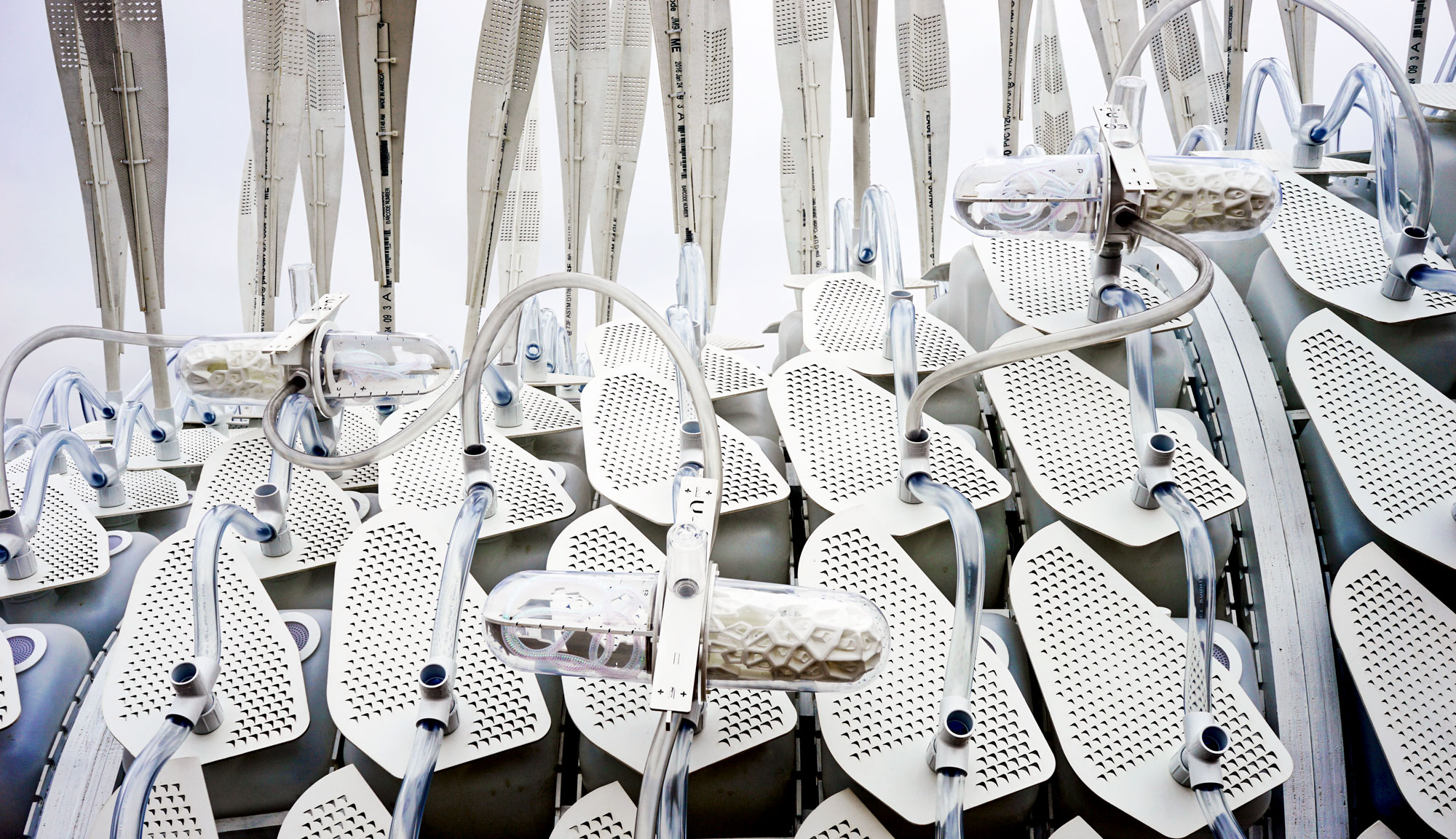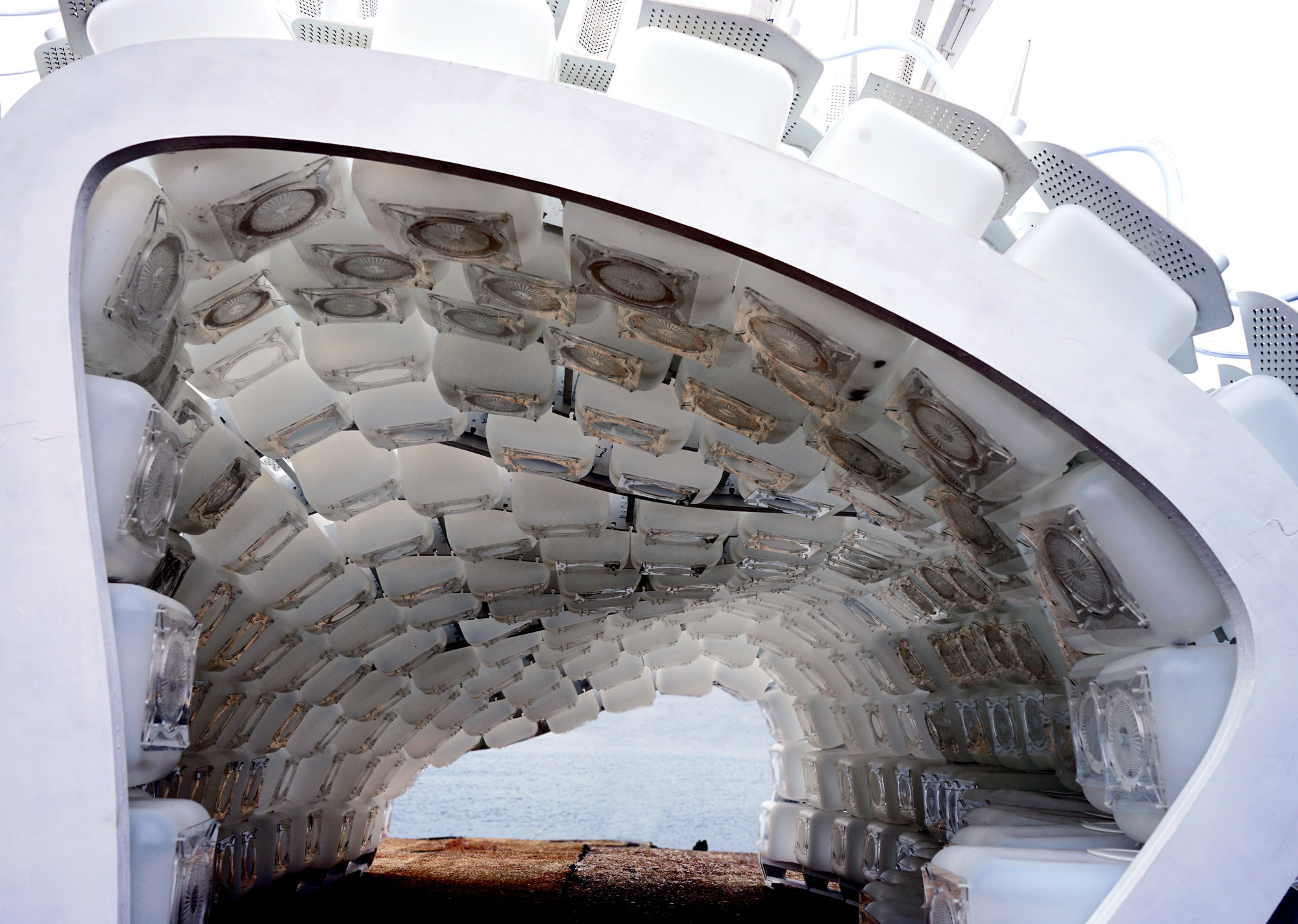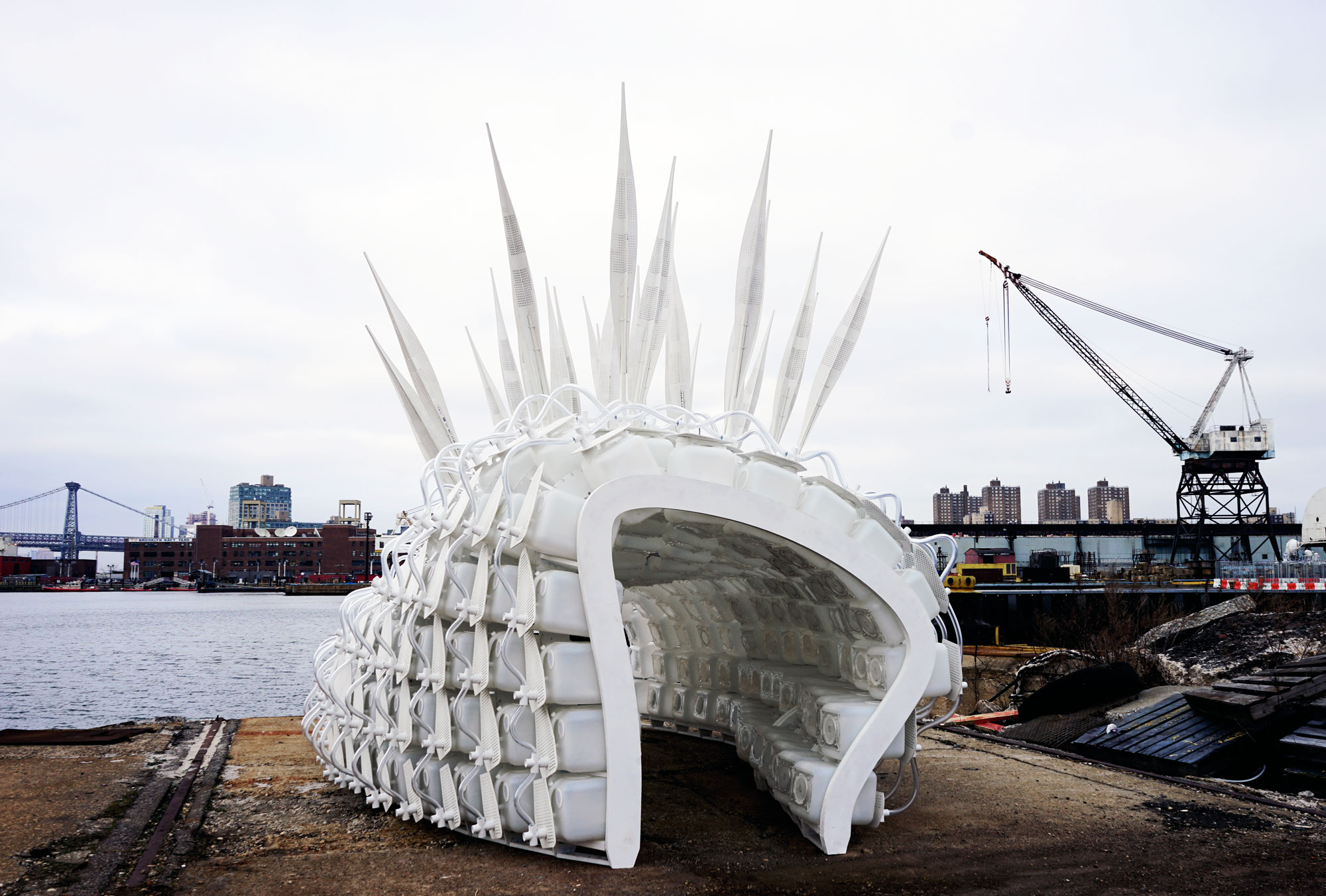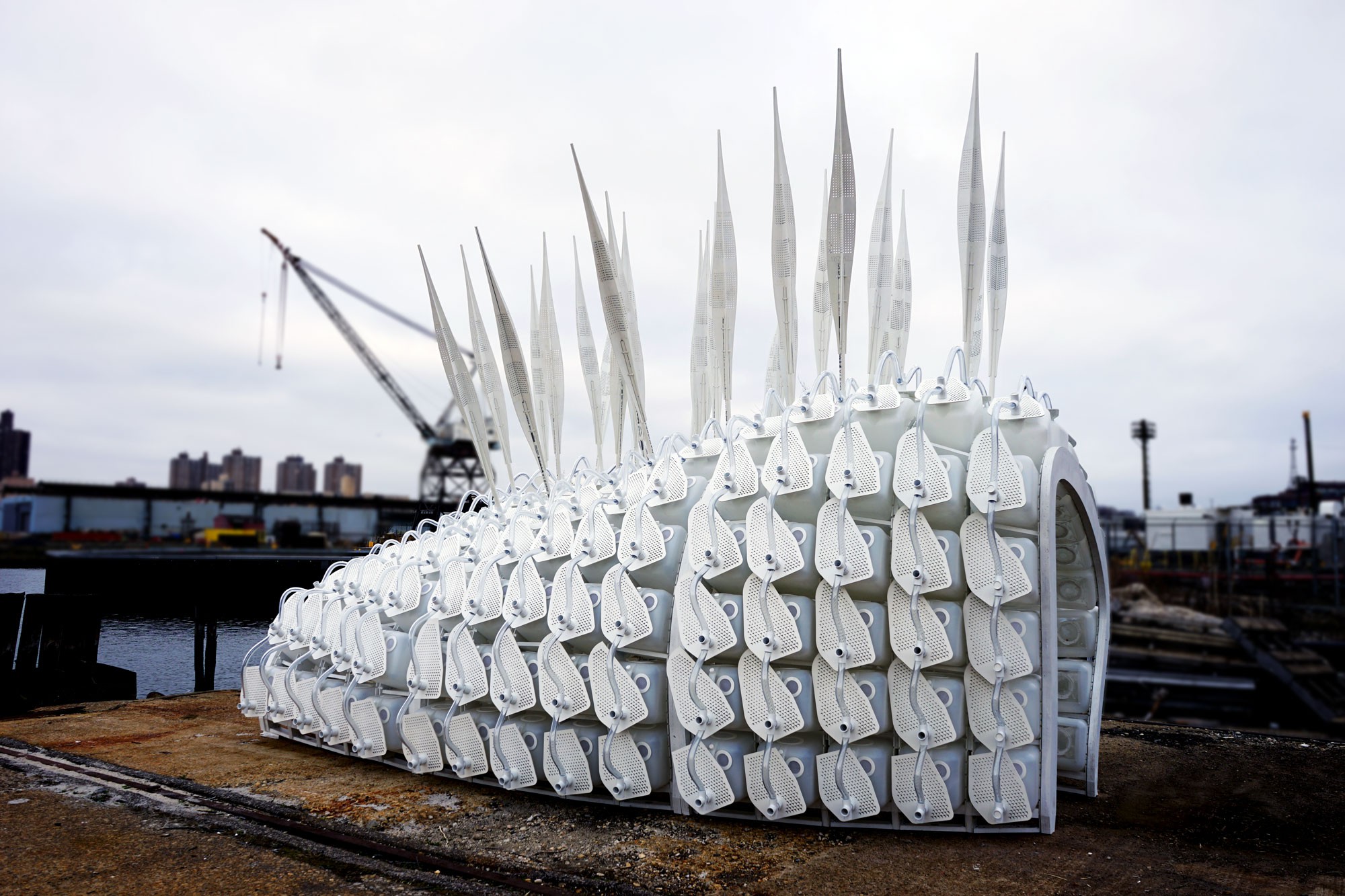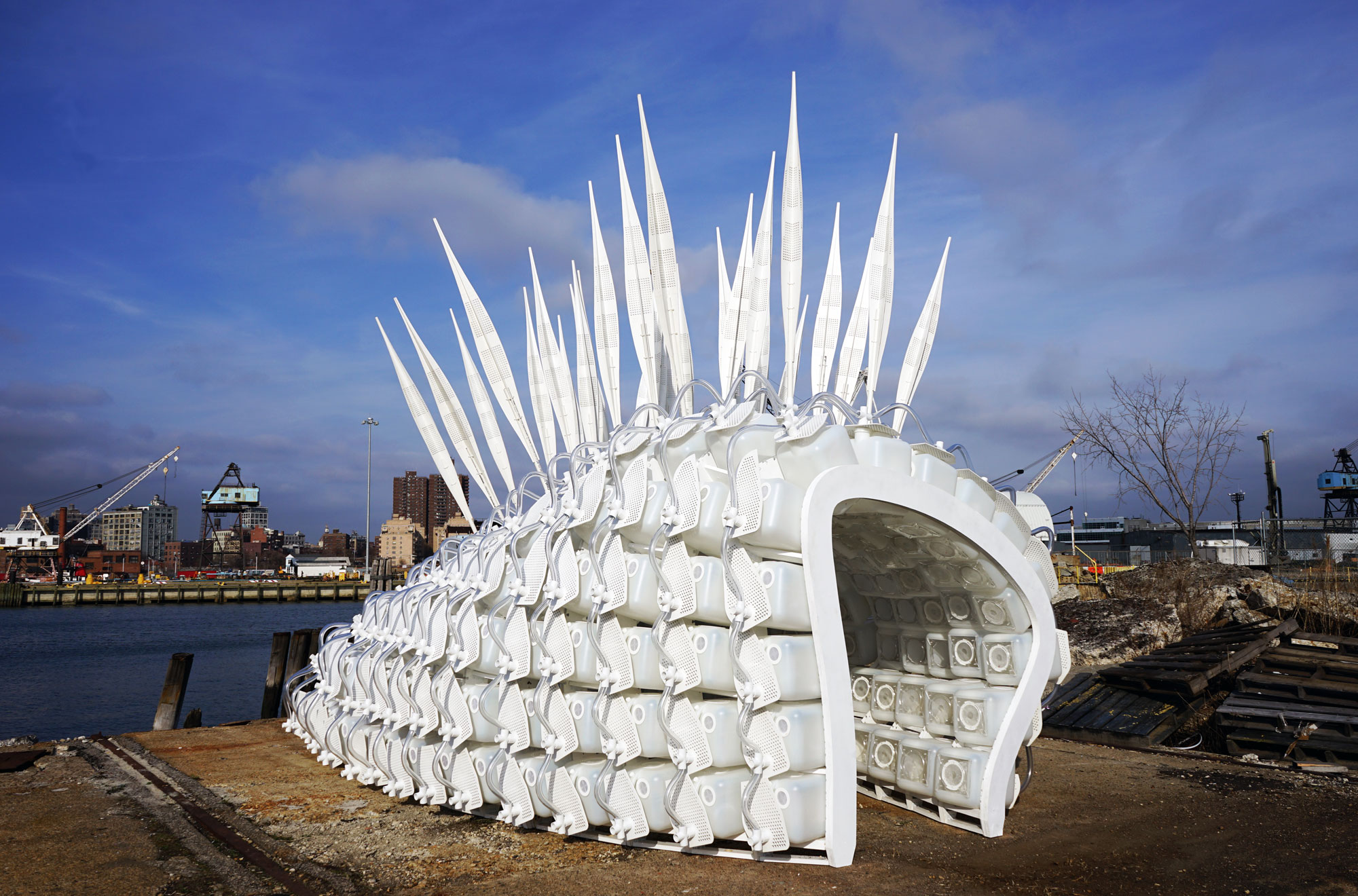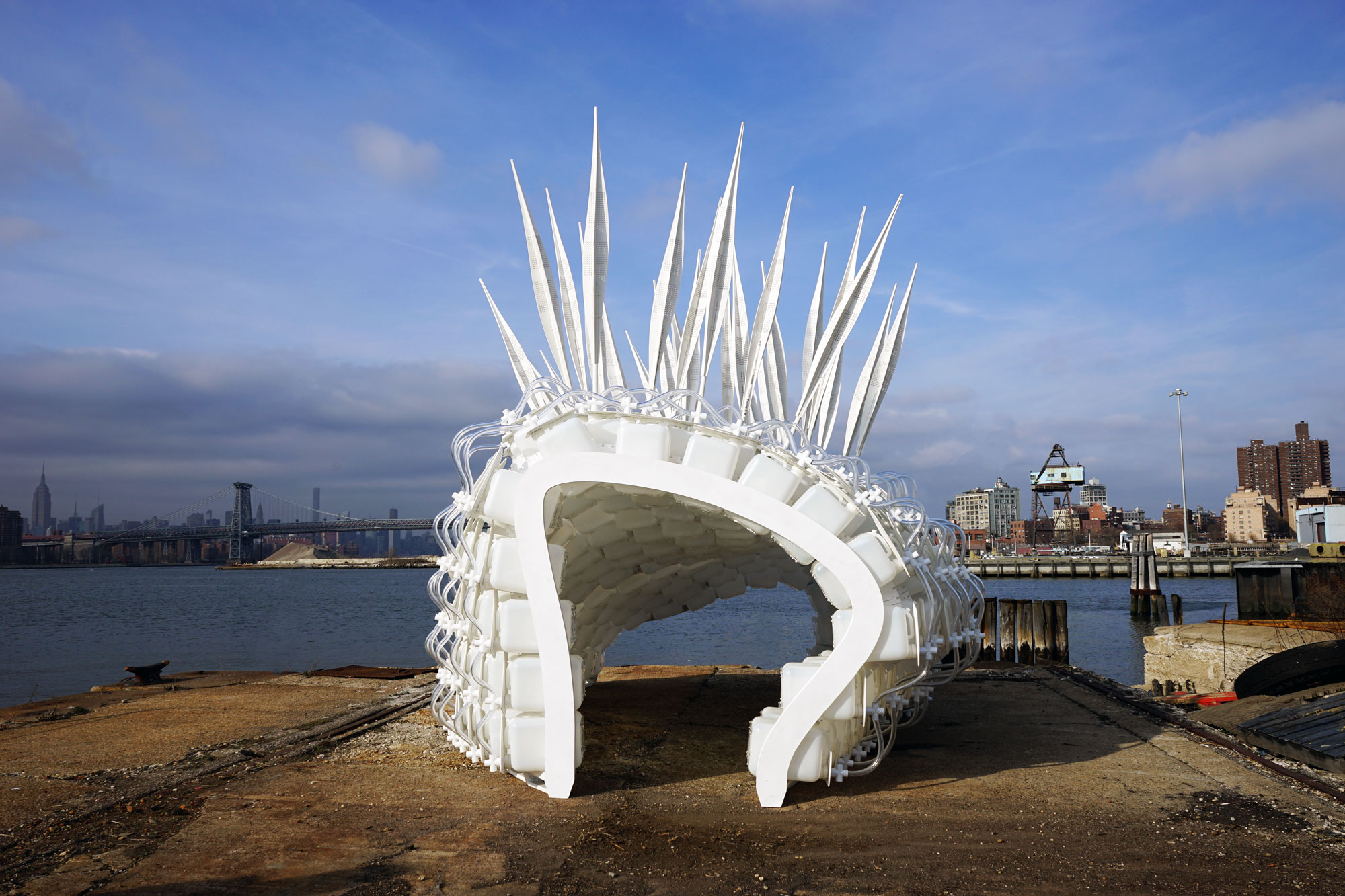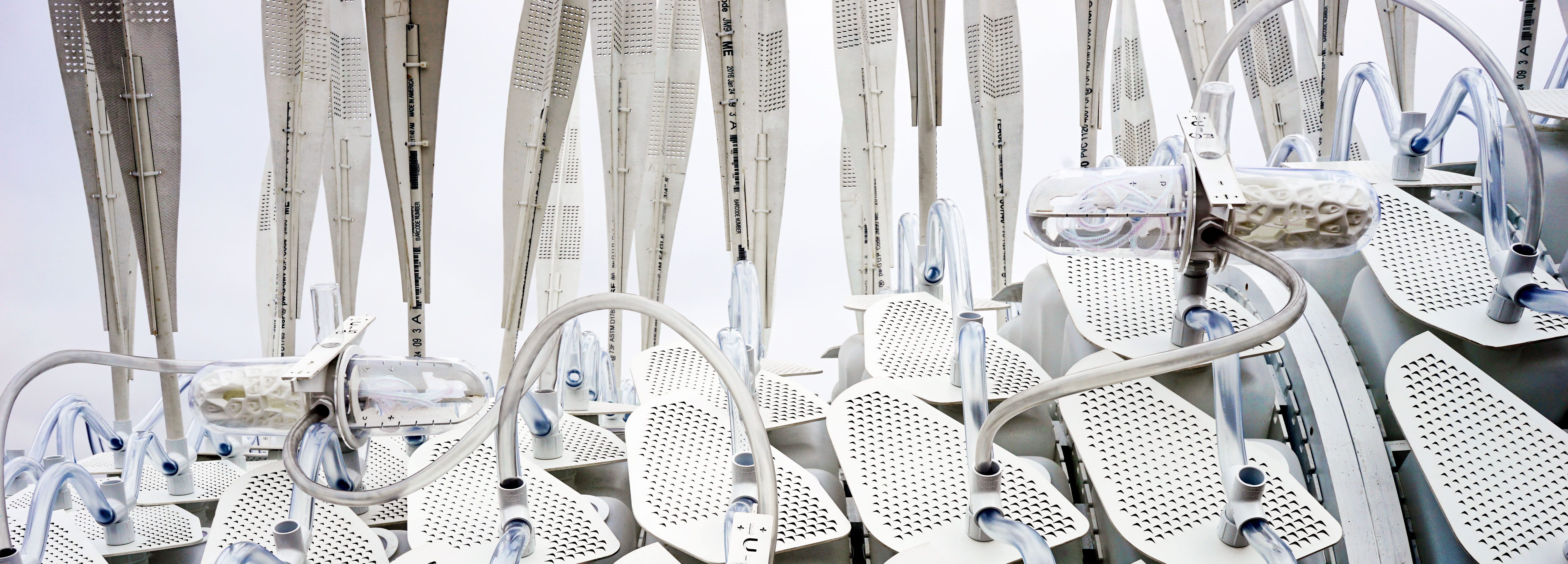A Nourishing Echinoderm: Insect Farm in New York

Photo: Mitchell Joachim/ Terreform ONE
Will people actually eat crickets, ants and beetles? What is common practice in parts of Asia and Africa evokes disgust in most inhabitants of industrialized Western nations. But from an ecological standpoint, who knows how long we will be able to afford Argentine beef tenderloin? According to architect Mitchell Joachim’s calculations, every gram of protein produced raising insects takes less than 1/300 of the water required for the usual beef, pork or chicken industries.
Even today, crickets are being raised by a few suppliers and offered as food in the USA. Naturally, they do not come in the form of patties or steaks. For the most part, the bugs raised on large insect farms are dried and processed into something like flour, which can be used to bake cookies. However, Joachim comments that the insect farms are not necessarily hygienic. Often, the insects live in old egg cartons or other improvised homes made of organic materials.
With his architecture studio Terreform ONE, Joachim is now working on developing a more hygienic and attractive alternative. This biomorphic insect farm was first introduced as a fully functional prototype at a harbour area of New York’s borough of Brooklyn, then shown on tour in American museums as part of the exhibition Survival Architecture and the Art of Resilience.
The biomorphic structure itself calls to mind a gigantic insect or the scaly armour of a long-extinct dinosaur. It consists of 16 CNC-milled wooden ribs, between which 224 breeding boxes for the crickets have been suspended. These are commonly available 5-gallon plastic containers which have been extensively modified by the architects for their purpose. For instance, the containers now have perforated lids that provide a constant source of fresh air, and a removable nylon bag inside for the crickets. Outside, pivoting shade panels protect the bugs from overheating.
In order to lay their eggs, the females crawl through hoses from their living containers to the outside of the structure, into separate »birth capsules« filled with damp earth. The hoses are also lined with nylon webbing, which provides traction for the crickets. What is perhaps the most striking element of the breeding station is the 25 plastic spines, each of which is about 1.5 metres long. They are meant to support ventilation of the canisters. Furthermore, they act as loudspeaker membranes that amplify the chirping of the insects, making the presence of the cricket farm acoustically unmistakeable.
Even today, crickets are being raised by a few suppliers and offered as food in the USA. Naturally, they do not come in the form of patties or steaks. For the most part, the bugs raised on large insect farms are dried and processed into something like flour, which can be used to bake cookies. However, Joachim comments that the insect farms are not necessarily hygienic. Often, the insects live in old egg cartons or other improvised homes made of organic materials.
With his architecture studio Terreform ONE, Joachim is now working on developing a more hygienic and attractive alternative. This biomorphic insect farm was first introduced as a fully functional prototype at a harbour area of New York’s borough of Brooklyn, then shown on tour in American museums as part of the exhibition Survival Architecture and the Art of Resilience.
The biomorphic structure itself calls to mind a gigantic insect or the scaly armour of a long-extinct dinosaur. It consists of 16 CNC-milled wooden ribs, between which 224 breeding boxes for the crickets have been suspended. These are commonly available 5-gallon plastic containers which have been extensively modified by the architects for their purpose. For instance, the containers now have perforated lids that provide a constant source of fresh air, and a removable nylon bag inside for the crickets. Outside, pivoting shade panels protect the bugs from overheating.
In order to lay their eggs, the females crawl through hoses from their living containers to the outside of the structure, into separate »birth capsules« filled with damp earth. The hoses are also lined with nylon webbing, which provides traction for the crickets. What is perhaps the most striking element of the breeding station is the 25 plastic spines, each of which is about 1.5 metres long. They are meant to support ventilation of the canisters. Furthermore, they act as loudspeaker membranes that amplify the chirping of the insects, making the presence of the cricket farm acoustically unmistakeable.
Further information:
Associates: Maria Aiolova, Felipe Molina, Matthew Tarpley, Melanie Fessel, Jiachen Xu, Lissette Olivares, Cheto Castellano, Shandor Hassan, Christian Hamrick, Ivan Fuentealba, Sung Moon, Kamila Varela, Yucel Guven, Chloe Byrne, Miguel Lantigua-Inoa.
Consultant: Seek Food – Robyn Shapiro
Production: Shandor Hassan, Christian Hamrick
Consultant: Seek Food – Robyn Shapiro
Production: Shandor Hassan, Christian Hamrick
